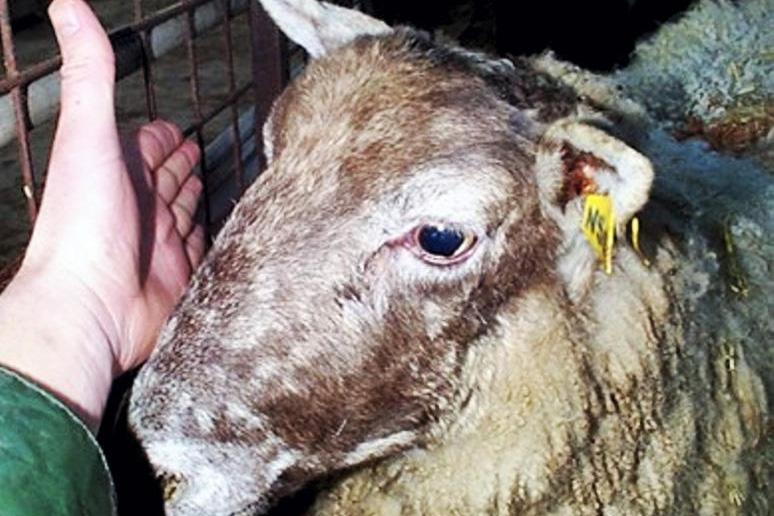This is in general associated with the ewe receiving a sub-optimal diet giving rise to problems in the last few weeks of pregnancy and can be fatal for both the lambs and ewes involved. It usually effects thinner ewes carrying multiple lambs. It can also occur in over-conditioned ewes, when they start to mobilise fat reserves.
Cause
When a ewe can’t get enough energy or is not consuming enough energy to match what is required for her own maintenance and the growing lambs in her womb, there is a deficit of energy. This will cause the ewe to become recumbent and have a considerably reduced appetite.
Individual cases may arise in older ewes as a result of bullying at the trough or tooth problems. Illness due to other factors such as parasitism if occurring at this time, can cause reduced appetite and set up the vicious cycle of twin lamb disease.
Another issue which affects incidence is Body Condition Score (BCS) in early pregnancy. If ewes are too fat coming up to lambing, and there is a reduction in the energy level within diet, especially if pre-lambing concentrates are not fed, the ewe will go into negative energy balance, which will result in the mobilisation of fats off the ewe’s back. Twin lamb disease can be especially severe in such cases.
A time of increased metabolic demand also increases the incidence of twin lamb disease. This could occur during inclement weather, stress of handling etc. This type of twin lamb disease is known as primary twin lamb disease.
However secondary twin lamb disease also occurs where the sheep develops the clinical signs of the disease as a result of another disease process reducing the ewe’s appetite. Here the sheep becomes ill with pneumonia or some other disease and if recovery is protracted the ewe starts to use up body fat preferentially to supply her metabolic needs.
Symptoms
The early signs of twin lamb disease are often a ewe becoming a “loner”, grazing on her own in a field. They may be still feeding and otherwise appear more or less normal. The affected ewe becomes depressed and inappetant. This progresses to ewes that behave as if they are blind or stupid. They may walk into walls or stand head-pressing in a corner. Other nervous signs may be evident and dullness is often a feature of disease. The animal develops a reduced appetite and this increases the severity of disease, acting as a vicious cycle.
The disease progresses to walking with a staggering gait and ultimately the sheep will go down. This may take a few days and death usually follows rapidly. Mortality rate in sheep that become recumbent is very high. The disease can be differentiated from other diseases of late pregnancy on the basis of a simple urine test which detects the presence of ketones in the urine.
Treatment
To treat ewes suffering from this disease effectively, it is important to catch them early on before they go down. Often when ewes go down there can be irreversible damage done that cannot be corrected. There are lots of treatment options available that are based around glucose, dextrose and propylene glycol drenches.
It is also important to separate these ewes into single pens with plenty of fresh water with electrolytes added and fresh hay or silage. One oral drench is not enough and they require drenching every three to four hours.
An option for valuable sheep is intravenous therapy. A final remedy is the use of corticosteroids, which can abort / induce the ewe and remove the demands put on her system by the developing lambs. Depending on the stage of pregnancy, however, the affected sheep will often not abort after treatment and may recover often to produce one or two viable lambs. Getting a vet to perform a caesarean section can also be considered if the animal is close to term as a salvage option. Your vet will best be able to advise you on the treatment options to suit your circumstances.
If you are seeing a lot of these cases then it is important to increase the energy nutrition of the flock.
Prevention and control
An important fact about twin lamb disease, which often confuses farmers, is that the quantity of feed supplied is rarely the issue and that quality is what counts. When a ewe is carrying twins or triplets, the growing lambs impinge on the size of the rumen, thereby reducing the capacity of the ewe to consume enough energy to meet the energy requirements of the ewe and growing lambs.
As a result, to supply enough energy for the growing lambs, which are growing fastest in the last few weeks, the concentrate: roughage ratio must be altered to favour concentrates. Hay is a superior choice to silage, as it has more dry matter, and does not take up as large a volume of the rumen.
Concentrates should be introduced gradually to avoid dietary upsets, which in themselves could lead to ketosis.
It is difficult to give accurate guidelines as to the exact rate of concentrate inclusion as this depends on the quality of the forage. Concentrates should be introduced at least five to six weeks before lambing, starting off with small amount and gradually building it up.






 This is a subscriber-only article
This is a subscriber-only article










SHARING OPTIONS: